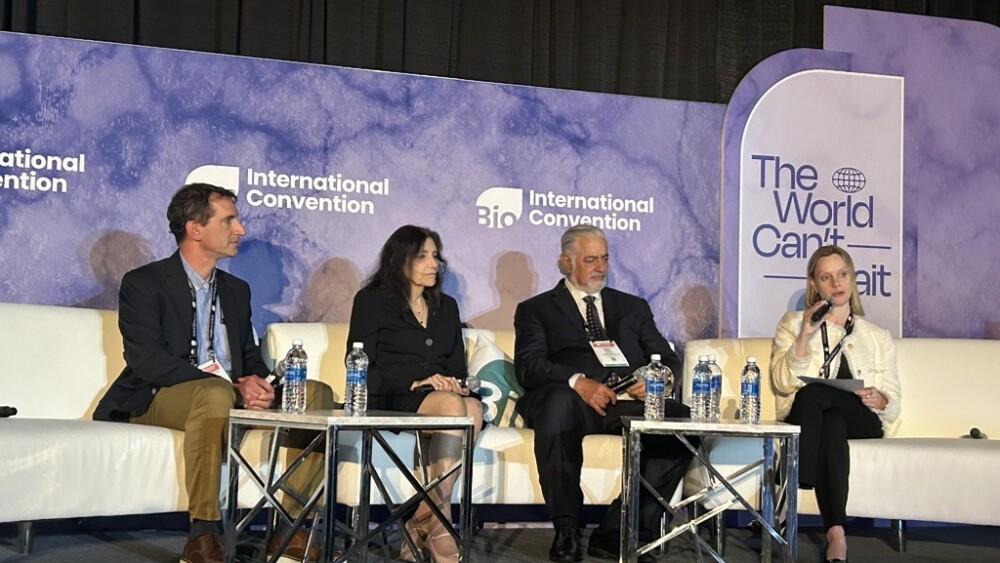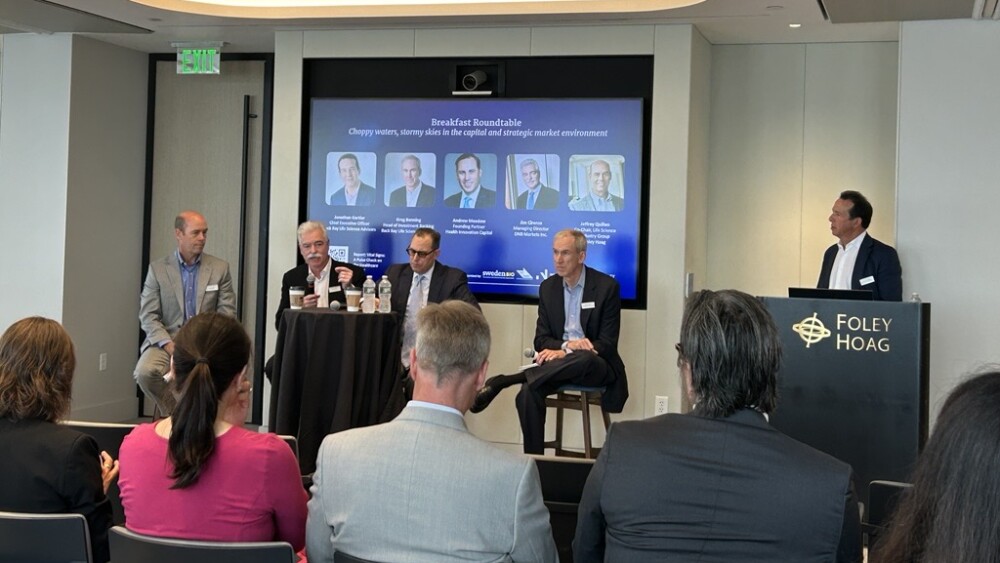Results From Three Studies Presented at CHEST 2019 Suggest Test Increases Physicians’ Confidence in Diagnosis and Can Reduce the Need for Invasive, Risky Procedures
SOUTH SAN FRANCISCO, Calif.--(BUSINESS WIRE)-- Veracyte, Inc. (Nasdaq: VCYT) announced that data from three studies presented at the annual meeting of the American College of Chest Physicians® (CHEST 2019) demonstrate that the Envisia® Genomic Classifier improves physicians’ ability to confidently diagnose idiopathic pulmonary fibrosis (IPF), a serious lung disease, without the need for further, invasive procedures. Specifically, the findings show that the Envisia classifier improves the performance of high-resolution CT (HRCT) imaging, which is typically used to help physicians distinguish IPF from other interstitial lung diseases (ILDs).
“The new Envisia classifier data being presented at CHEST add to the growing body of evidence showing that the test complements HRCT and clinical factors for a more confident diagnosis,” said Bonnie H. Anderson, Veracyte’s chairman and chief executive officer. “Given the long-standing challenges associated with differentiating IPF from other ILDs, we believe the Envisia classifier can significantly improve patient care by expediting accurate diagnosis, reducing risk and decreasing cost.”
Each year in the United States and Europe, up to 200,000 patients are evaluated for suspected ILDs, including IPF, which is among the most common, deadly and difficult to diagnose of these lung-scarring diseases. A survey conducted by the Pulmonary Fibrosis Foundation showed that 55 percent of IPF/ILD patients are misdiagnosed at least once and, for one in five patients, accurate diagnosis took three or more years. Accurate and timely diagnosis is important because therapies are now available to slow the progression of IPF.
The Envisia classifier is the first commercially available test that helps distinguish IPF from other ILDs, without the need for risky surgery. Veracyte developed the classifier by combining RNA whole-transcriptome sequencing and machine learning, which enables the most refined genomic approach possible for distinguishing the usual interstitial pneumonia (UIP) pattern, whose presence is essential to IPF diagnosis.
Data being presented for the first time at CHEST 2019 consistently demonstrate that the Envisia classifier is a valuable complement to HRCT in the diagnosis of ILDs and IPF.
- Sadia Benzaquen, M.D., chair of Pulmonary/Critical Care at Einstein Healthcare Network, will share data today which show that adding Envisia classifier results to HRCT identified twice as many UIP patients as HRCT alone (Abstract #4060). Using scans from 46 patients, researchers evaluated the diagnostic performance of HRCT when combined with the Envisia classifier, both among central and local radiology teams. Among the central radiology teams in this study, combined classifier and HRCT results identified true UIP in 8 additional patients (17 vs. 9 with HRCT alone), with a joint sensitivity of 81 percent and specificity of 88 percent. When coupled with local radiology, combined classifier and HRCT results identified true UIP in 7 additional patients (21 vs. 14 with HRCT alone), substantially improving sensitivity (95 percent vs. 64 percent with local HRCT alone), while maintaining HRCT specificity of 71 percent.
- Findings from a study presented by Jonathan Chung, M.D., of The University of Chicago Medicine, further validate the Envisia classifier’s ability to enhance physician confidence in IPF diagnosis, with high concordance to multidisciplinary review teams (MDDs) informed by histopathology (Abstract #4010). In this study, two MDDs were asked to make an IPF or non-IPF diagnosis for 94 patients enrolled in the BRAVE (Bronchial Sample Collection for a Novel Genomic Test) trial. Researchers found a high (>86 percent) concordance between IPF and non-IPF diagnoses made by MDDs using the Envisia classifier as compared to surgical histopathology results. This concordance was even higher (90 percent) among patients who had HRCT results that were inconsistent with UIP. Among patients diagnosed with IPF by both MDDs (n=17), the use of the Envisia classifier significantly improved the confidence of an IPF diagnosis (94 percent confidence with the classifier vs. 53 percent with histopathology; p=0.02).
- Finally, data that will be presented on Tuesday, Oct. 22 from an independent study conducted at Tulane University also show that adding Envisia classifier results to HRCT findings significantly improves physicians’ confidence in IPF diagnosis (Abstract #4805). Investigators shared test results from 24 patients who were inconclusive for UIP following HRCT with two MDDs: The first sequentially reviewed clinical and HRCT findings, followed by results from cryobiopsy (a diagnostic procedure that is sometimes conducted during bronchoscopy) and then, the Envisia classifier. The second reviewed results from the Envisia test first, followed by cryobiopsy results. Among the first MDD, adding Envisia test results to cryobiopsy pathology findings significantly increased physicians’ confidence in making an IPF diagnosis (from 36 percent to 71 percent p=0.03). The overall agreement between the Envisia classifier and the first and second MDD diagnosis for UIP was 96 percent and 88 percent, respectively.
“The diagnosis of IPF often remains a challenge for physicians and patients, particularly given the risk involved with invasive diagnostic procedures and the urgency of getting patients onto appropriate treatment in order to slow disease progression,” said Joseph Lasky, M.D., professor of medicine at Tulane University. “Our findings suggest that the Envisia classifier enhances diagnostic confidence, and thereby helps alleviate this challenge by serving as a valuable complement to HRCT and clinical factors.”
About Envisia
The Envisia Genomic Classifier is the first commercially available test to improve the diagnosis of idiopathic pulmonary fibrosis (IPF). The genomic test enables physicians to more confidently differentiate IPF from other interstitial lung diseases (ILDs), helping to guide an optimal patient treatment plan that can improve outcomes and reduce risk. The Envisia classifier was developed using RNA whole-transcriptome sequencing and machine learning to identify the usual interstitial pneumonia (UIP) pattern, which is a hallmark of IPF. The test assesses patient samples obtained through bronchoscopy, a nonsurgical procedure commonly used in lung evaluation, and is used as a complement to high-resolution computed tomography (HRCT). The Envisia classifier is proven to detect UIP with high correlation to the gold standard – histopathology results read by ILD experts – without the need for surgery.
About Veracyte
Veracyte (Nasdaq: VCYT) is a leading genomic diagnostics company that improves patient care by providing answers to clinical questions that inform diagnosis and treatment decisions without the need for costly, risky surgeries that are often unnecessary. The company's products uniquely combine RNA whole-transcriptome sequencing and machine learning to deliver results that give patients and physicians a clear path forward. Since its founding in 2008, Veracyte has commercialized seven genomic tests and is transforming the diagnosis of thyroid cancer, lung cancer and idiopathic pulmonary fibrosis. Veracyte is based in South San Francisco, California. For more information, please visit www.veracyte.com and follow the company on Twitter (@veracyte).
Cautionary Note Regarding Forward-Looking Statements
This press release contains "forward-looking statements" within the meaning of the Private Securities Litigation Reform Act of 1995. Forward-looking statements can be identified by words such as: "anticipate," "intend," "plan," "expect," "believe," "should," "may," "will" and similar references to future periods. Examples of forward-looking statements include, among others, the ability of Envisia to improve IPF diagnosis and to reduce surgeries. Forward-looking statements are neither historical facts nor assurances of future performance, but are based only on our current beliefs, expectations and assumptions. These statements involve risks and uncertainties, which could cause actual results to differ materially from our predictions, and include, but are not limited to: our ability to achieve milestones under the collaboration agreement with Johnson & Johnson; our ability to achieve and maintain Medicare coverage for our tests; the benefits of our tests and the applicability of clinical results to actual outcomes; the laws and regulations applicable to our business, including potential regulation by the Food and Drug Administration or other regulatory bodies; our ability to successfully achieve and maintain adoption of and reimbursement for our products; the amount by which use of our products are able to reduce invasive procedures and misdiagnosis, and reduce healthcare costs; the occurrence and outcomes of clinical studies; and other risks set forth in our filings with the Securities and Exchange Commission, including the risks set forth in our quarterly report on Form 10-Q for the quarter ended June 30, 2019. These forward-looking statements speak only as of the date hereof and Veracyte specifically disclaims any obligation to update these forward-looking statements or reasons why actual results might differ, whether as a result of new information, future events or otherwise, except as required by law.
Veracyte, Afirma, Percepta, Envisia and the Veracyte logo are trademarks of Veracyte, Inc.
View source version on businesswire.com: https://www.businesswire.com/news/home/20191021005438/en/
Contacts
Investors:
Keith Kennedy
Chief Operating Officer and Chief Financial Officer
keith@veracyte.com
650-243-6357
Media:
Tracy Morris
tracy.morris@veracyte.com
650-380-4413
Source: Veracyte, Inc.





